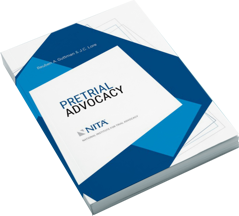Department of Justice, October 19, 2020
WASHINGTON – San Diego Christian College (SDCC), based in Santee, California, will pay $225,000 to resolve allegations under the False Claims Act for submitting false claims to the U.S. Department of Education in violation of the federal ban on incentive-based compensation, the Justice Department announced today.
Title IV of the Higher Education Act (HEA) prohibits any institution of higher education that receives federal student aid from compensating student recruiters with a commission, bonus, or other incentive payment based on the recruiters’ success in securing student enrollment. The incentive compensation ban protects students against admissions and recruitment practices that serve the financial interests of the recruiter rather than the educational needs of the student.
“Higher education enrollment decisions should put students first,” said Acting Assistant Attorney General Jeffrey Bossert Clark of the Justice Department’s Civil Division. “Offering recruiters financial incentives to enroll students undermines students’ ability to make educational decisions in their own best interests.”
“Colleges should be places for students to learn and grow, not places to be taken advantage of by recruiters watching out for the own financial interests,” said U.S. Attorney Peter M. McCoy, Jr. for the District of South Carolina. “This office will continue its efforts to protect students against illegal recruiting practices.”
“Today’s settlement is a result of the hard work and effort of the Office of Inspector General and the Department of Justice to protect and maintain the integrity of the Federal student aid programs,” said Neil Sanchez, Special Agent in Charge of the U.S. Department of Education Office of Inspector General’s Southern Regional Office. “We will continue to work together to ensure that Federal student aid funds are used as required by law. America’s taxpayers and students deserve nothing less.”
The settlement, which was based on SDCC’s ability to pay, resolves allegations that between 2014 and 2016, SDCC hired Joined, Inc., a California-based student recruiting company, to recruit students to SDCC. The United States contended that SDCC compensated Joined with a share of the tuition that SDCC received from the enrollment of recruited students, in violation of the prohibition on incentive compensation.
The allegations resolved by the settlement were brought in a lawsuit filed under the qui tam, or whistleblower, provisions of the False Claims Act by Maurice Shoe, the co-owner of Joined. The Act permits private parties to sue on behalf of the government for false claims and to receive a share of any recovery. As part of today’s resolution, the whistleblower will receive $33,750.
This matter was investigated by the U.S. Attorney’s Office for the District of South Carolina and the Civil Division’s Commercial Litigation Branch. Investigative assistance was provided by the Office of Inspector General of the Department of Education.
The claims resolved by the settlement are allegations only, and there has been no determination of liability. The case is captioned United States ex rel. Shoe v. San Diego Christian College, No. 6:16-cv-01570 (D.S.C.).
